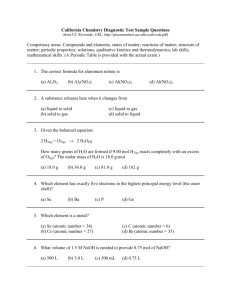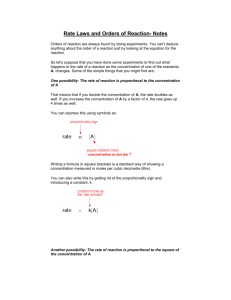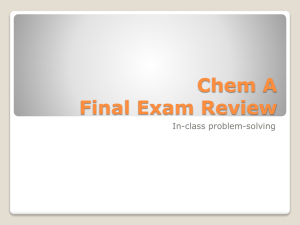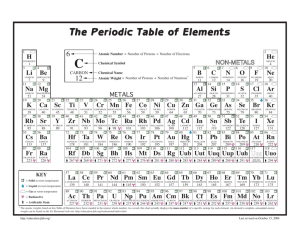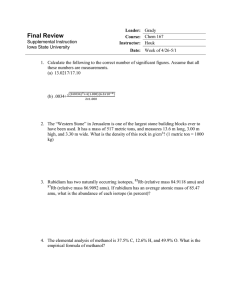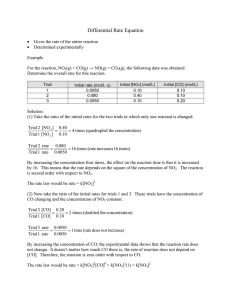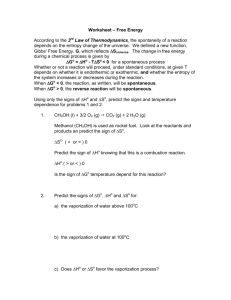California Chemistry Diagnostic Test Sample Questions
advertisement
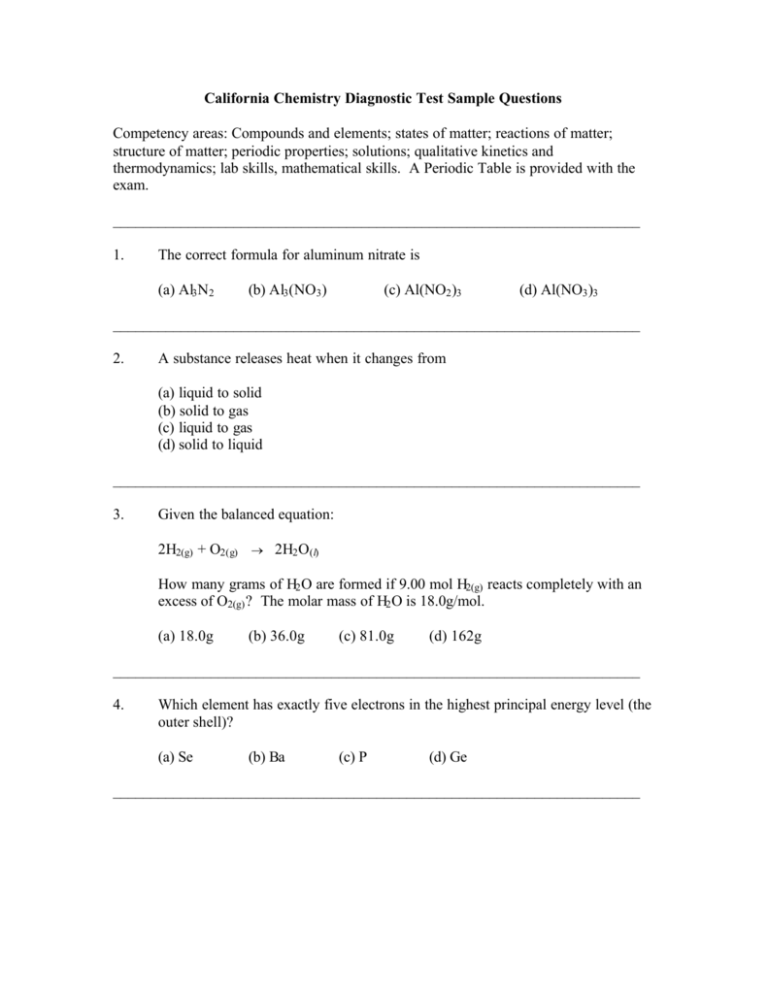
California Chemistry Diagnostic Test Sample Questions Competency areas: Compounds and elements; states of matter; reactions of matter; structure of matter; periodic properties; solutions; qualitative kinetics and thermodynamics; lab skills, mathematical skills. A Periodic Table is provided with the exam. ______________________________________________________________________ 1. The correct formula for aluminum nitrate is (a) Al3 N2 (b) Al3 (NO3 ) (c) Al(NO2 )3 (d) Al(NO3 )3 ______________________________________________________________________ 2. A substance releases heat when it changes from (a) liquid to solid (b) solid to gas (c) liquid to gas (d) solid to liquid ______________________________________________________________________ 3. Given the balanced equation: 2H2(g) + O2(g) → 2H2 O(l) How many grams of H2 O are formed if 9.00 mol H2(g) reacts completely with an excess of O2(g) ? The molar mass of H2 O is 18.0g/mol. (a) 18.0g (b) 36.0g (c) 81.0g (d) 162g ______________________________________________________________________ 4. Which element has exactly five electrons in the highest principal energy level (the outer shell)? (a) Se (b) Ba (c) P (d) Ge ______________________________________________________________________ 5. Which element is a metal? (a) Se (atomic number = 34) (b) Co (atomic number = 27) (c) C (atomic number = 6) (d) Br (atomic number = 35) ______________________________________________________________________ 6. What volume of 1.5M NaOH is needed to provide 0.75 mol of NaOH? (a) 500L (b) 5.0 L (c) 500 mL (d) 0.75 L ______________________________________________________________________ 7. For a chemical reaction it is usually found that the reaction rate is faster at higher temperature. The rate increases because (a) the concentrations of reactants increase (b) more reactants collide with energy equal to or greater than the activation energy (c) the concentrations of products increase (d) the volume expands and there is more room for new compounds (products) to form ______________________________________________________________________ 8. Which answer is closest to the true value of the expression: (9.1 x 104 )(1.1 x10-5)(log10-13)(1000) (a) 1.3 (b) 13000 (c) -13000 (d) 1.3 x 10-11 ______________________________________________________________________ 9. Which substance does not obey the Lewis octet rule? (a) N2 (b) NO (c) CF4 (d) Ar ______________________________________________________________________ 10. For the reaction at equilibrium: 2 NO(g) + O2(g) ℑ 2 NO2(g) which change will increase the amount of NO2(g) ? (a) remove NO gas (b) add NO gas (c) add a catalyst (d) remove O2 gas ______________________________________________________________________ 11. For the reaction 2C6 H6(g) + 15O2(g) ℑ 12CO2(g) + 6H2O(g) the expression for the equilibrium constant, K, is (a) [CO 2 ] [H 2 O] [C6H 6 ] [O 2 ] 12 6 (b) [CO 2 ] 2[H 2 O15] [C6H 6 ] [O 2 ] (c) [C6 H 6 ] [O 2 ] [CO 2 ] [H 2O] (d) [12CO 2 ] [6H 2 O ] [2C 6H 6 ] [15O 2 ] ______________________________________________________________________ answers: 1d; 2a; 3d; 4c; 5b; 6c; 7b; 8c; 9b; 10b; 11b
